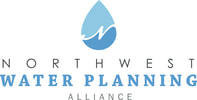|
The Illinois Water Inventory Program (IWIP) develops and maintains a database of high-capacity water wells and intakes from public water supplies, self-supplied industries, irrigation, fish and wildlife, and conservation sectors. But they do much more than collect data. Participation and involvement with IWIP pays dividends for operators, stakeholders, and users alike.
IWIP coordinates reporting and data collection on high-capacity water wells and intakes statewide, which are defined as any well or intake that is rated to pump 70 gallons per minute (gpm) or greater, both individually and as a combined measure when multiple wells/intakes are present at one facility. This collection is done primarily through IWIP’s Online Reporting Tool and covers groundwater and surface water uses. How can the price of water in your community be changed to promote water conservation? How can municipalities price water to keep basic needs and services affordable for all residents while promoting reduced use? And what are the long-term benefits for the municipality?
What is conservation pricing? Conservation pricing is water rate structures that motivate consumers to use water efficiently. These structures come in many forms, such as uniform rates, tiered rates, seasonal rates, and water budget-based rates. For all of these rate structures, wasteful or inefficient water use is more costly for customers than using only what they really need for drinking, cooking, sanitation, and cleaning. Significant portions of the Chicago region – especially those dependent upon groundwater sources -- are encountering water supply and quality issues. The region’s comprehensive plan, ON TO 2050, anticipates these issues will grow unless additional steps are taken to coordinate and conserve the region’s shared water supply resources. The recently updated regional water demand forecast revealed that while overall water use is stable, projected demand will exceed available groundwater supplies in some areas. Yet with additional conservation and efficiency measures, the region can maintain its long-term drinking water supplies.
Protecting and conserving our water supply is a priority of all water resource managers, public works directors, and municipal leaders in the Chicago area. What is one of the most efficient ways to address water conservation? Look at the lawns.
Landscape and lawn watering is the leading discretionary use of water in the Chicago region, accounting for more than thirty percent of all residential water use. Additionally, as much as fifty percent of all water used outdoors is wasted due to inefficient watering methods and systems. This use puts a strain on existing water resources, particularly in Northwest Water Planning Alliance communities. It also impacts existing water infrastructure, causing peak usage to rise and increasing the need for additional capacity-building infrastructure, which can be of huge cost to communities. |
ABOUTThe latest updates page features posts about issues affecting NWPA member communities and best practices, drawing on interviews and conversations with experts. Archives
July 2024
Categories
All
|
